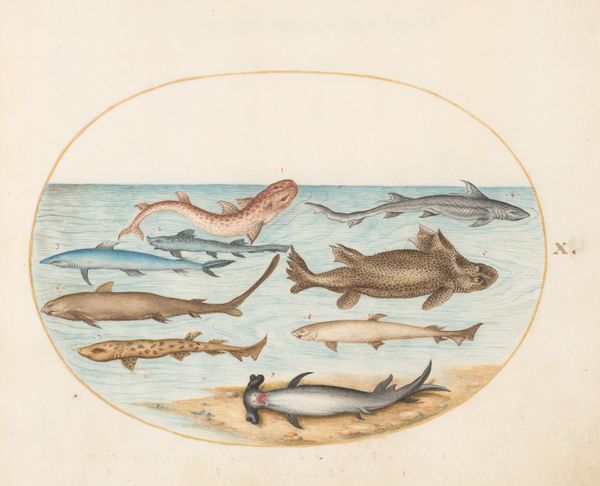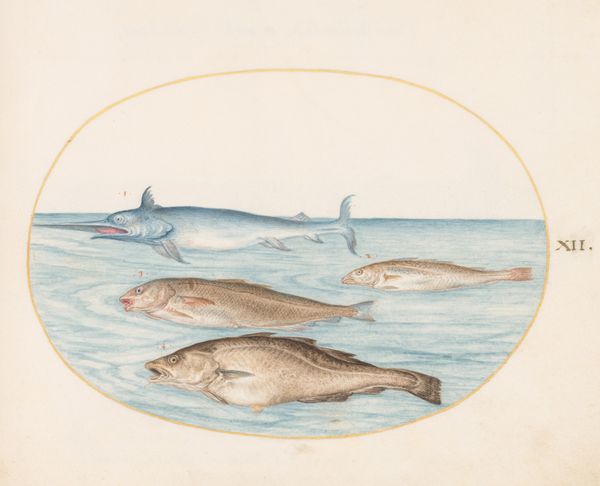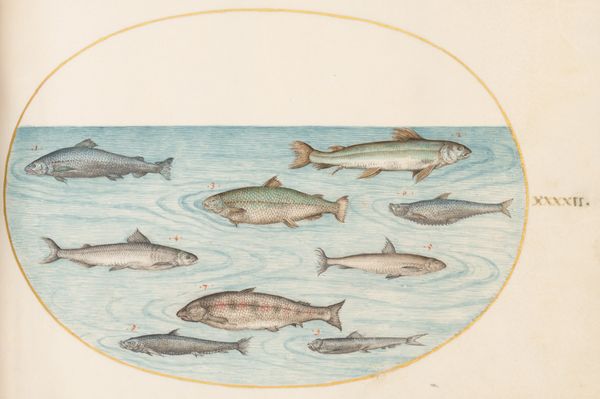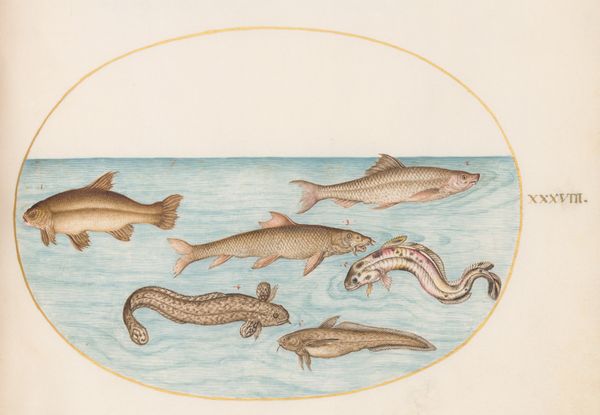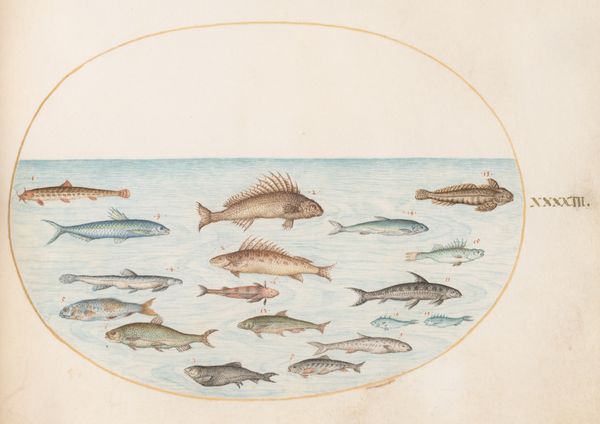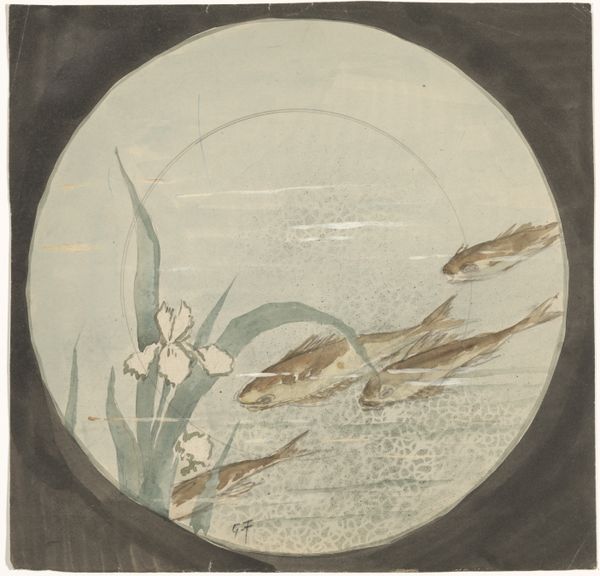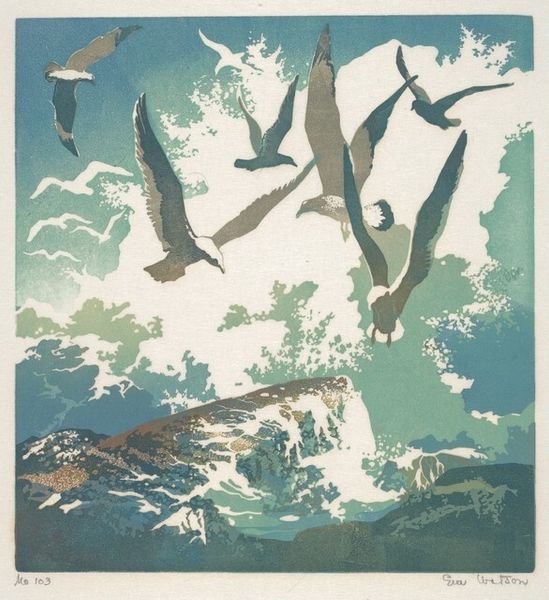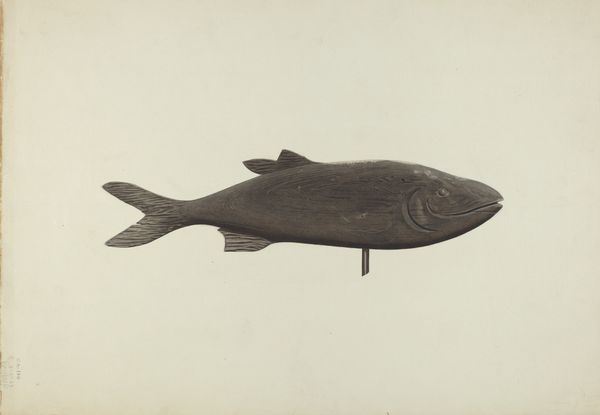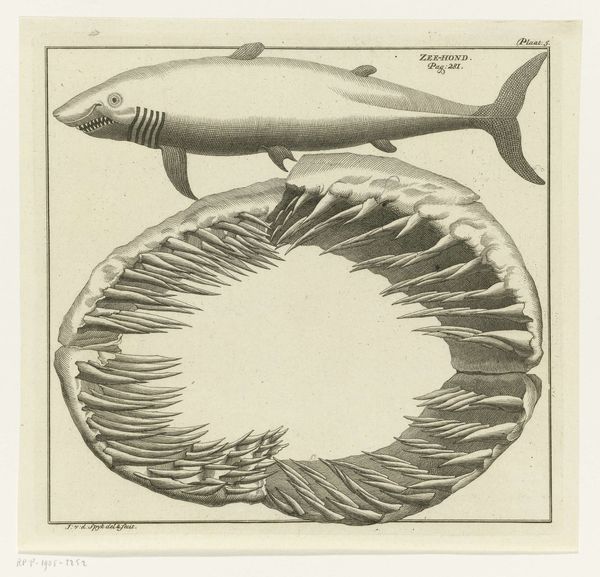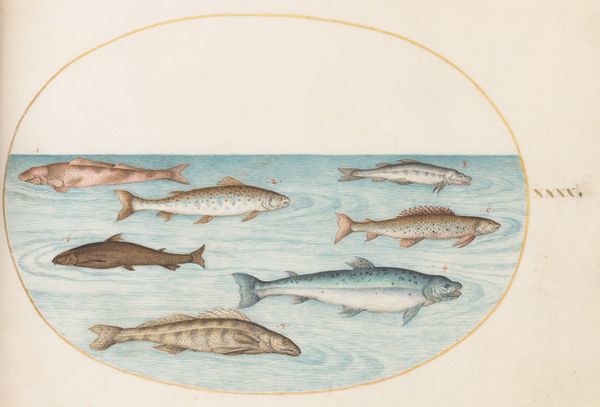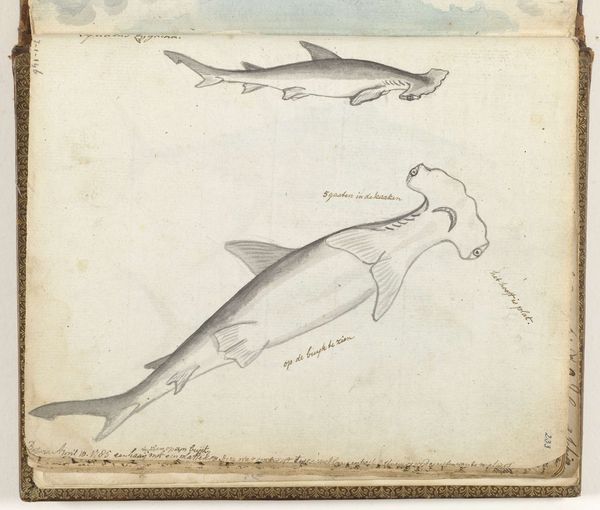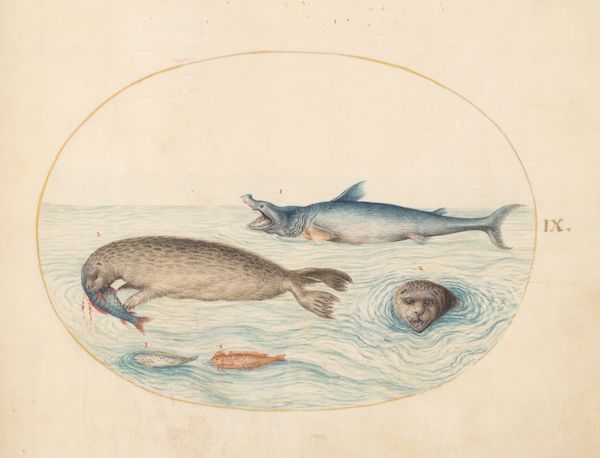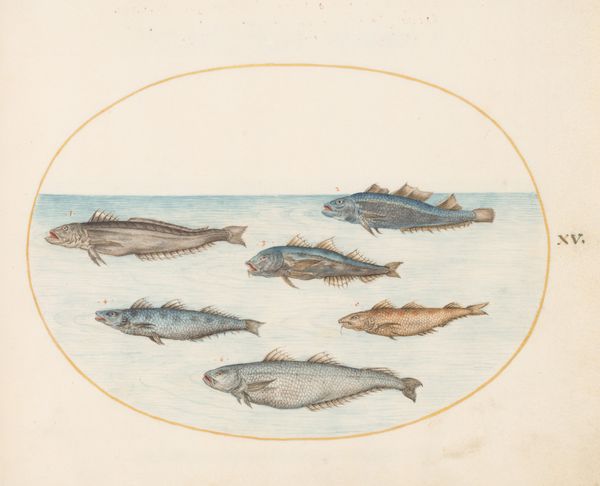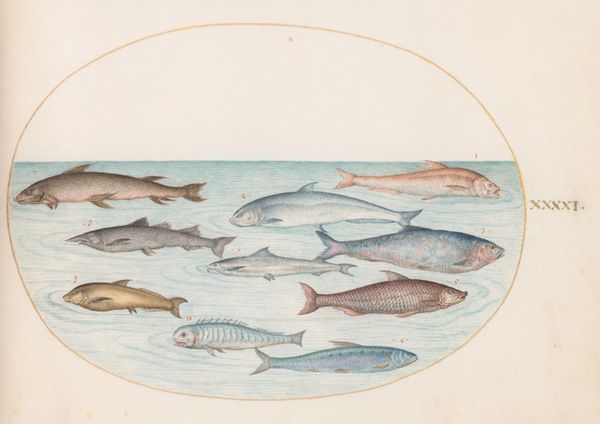
drawing, paper, watercolor
#
drawing
#
water colours
#
impressionism
#
landscape
#
figuration
#
paper
#
watercolor
#
coloured pencil
#
biomorphic
#
watercolor
Dimensions: 403 mm (height) x 429 mm (width) (bladmaal)
Editor: So, here we have Niels Skovgaard’s “Springende delfiner,” created around 1890 or 1891, using watercolor, coloured pencil and drawing on paper. I'm immediately struck by the almost dreamlike quality. The dolphins are within this distinct circular frame and the colours seem very soft. What do you see when you look at this piece? Curator: What captures my attention is the stark contrast between the precise, almost scientific, rendering of the dolphins and the ambiguous, blurred environment they inhabit. The composition immediately brings to mind ideas of containment, almost as though we're peering into a petri dish rather than the ocean. Note how the circular frame creates a contained artificial world. Editor: A petri dish, that's interesting! I was also wondering about the composition – do you think the way the dolphins are arranged contributes to the feeling of containment you mentioned? Curator: Precisely. The layering of the dolphins, and the subtle gradations in color, draw the eye inward, towards the center. What’s truly striking is the overall flatness. There is an absence of traditional depth. Even the transition from water to land in the background feels almost negligible. The circle itself as well reinforces an image with clear compositional boundaries. Do you think Skovgaard challenges any conventions of representing landscapes and seascapes? Editor: I hadn’t thought of it that way. I was too busy thinking the limited use of a wide color palatte evokes a sense of tranquility to me, a sort of calmness beneath the waves. And yet you are right: he completely flattens the typical perspective that usually depicts a deeper ocean. The circular framing adds a layer of...artifice. Curator: Indeed. Skovgaard is toying with the viewer's perception, presenting a world that is both naturalistic in its depiction of the dolphins, yet consciously constructed through its composition and rendering. A delicate balance of semiotics, if you will. Editor: I've definitely gained a new appreciation for Skovgaard's calculated subversion. Thank you, that helps see it through a completely different angle.
Comments
No comments
Be the first to comment and join the conversation on the ultimate creative platform.
